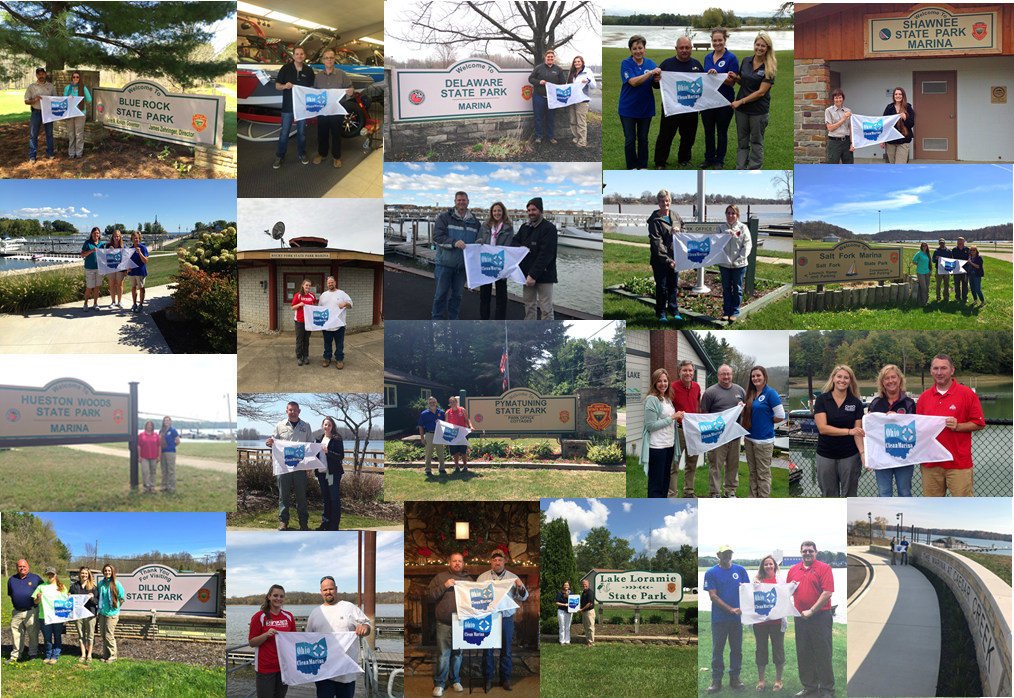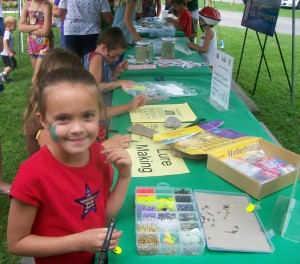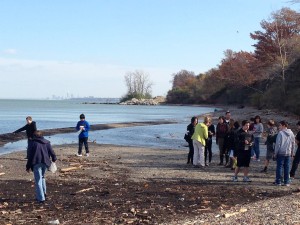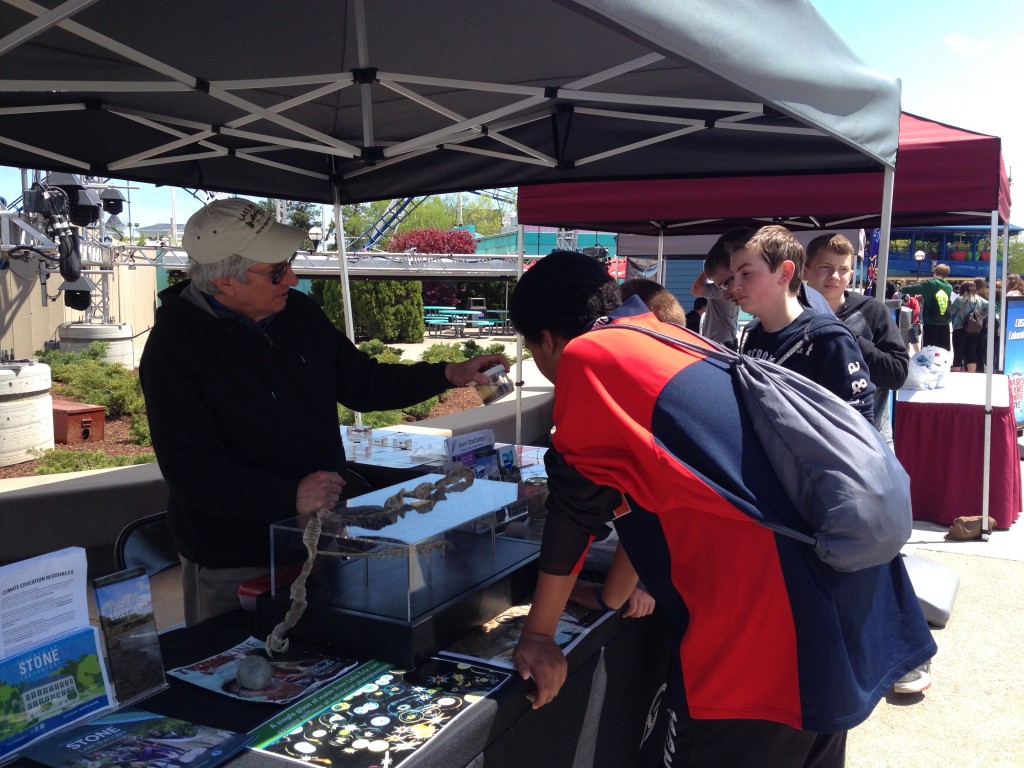The Ohio Clean Marinas Program is a partnership initiative between Ohio Sea Grant and the Ohio Department of Natural Resources (ODNR) through their Division of Parks and Watercraft and the Office of Coastal Management. The program supports marinas across Ohio by providing education and technical assistance on environmental topics and promoting a voluntary, incentive-based certification program to recognize those marinas that go above and beyond environmental regulations.

Regulatory changes are affecting a common practice in the marina industry – boat bottom power washing.
In 2018, a change in stormwater and wastewater regulations for the marina industry created a demand from marina businesses for guidance and clarification on these topics. In response to this need, the Ohio Clean Marinas Program collaborated with the Ohio Environmental Protection Agency (EPA) to develop and administer a series of educational workshops across Ohio to provide guidance to marina owners on how to comply with the new regulatory changes. The “Stormwater and Wastewater Workshops for Marinas” project was funded through an Ohio EPA Environmental Education Fund grant, with financial and in-kind match provided by ODNR and Ohio Sea Grant. The workshops provided education on best practices that would help marinas advance action on non-point source pollution at their facilities.
Over 60 marina owners, natural resource managers, and other interested parties participated in the workshops, with 58 percent of workshop attendees noting that they learned new information from the Ohio Clean Marinas Program on stormwater, wastewater management, and coastal resiliency that they can use, and 42 percent of workshop attendees committing to take the information provided by Ohio EPA during the workshop to inform future decision making. In preparation for the workshops, Ohio EPA developed a fact sheet in partnership with Ohio Clean Marinas Program staff to help marina owners understand the new regulatory changes, as well as offer options and guidance for compliance.


In response for a need for guidance on stormwater and wastewater changes, the Ohio Clean Marinas Program hosted a series of in-person workshops featuring lecture and field portions with experts presenting on these topics.
Since its inception in 2003, the Ohio Clean Marianas Program has worked with state, federal, and local agencies, marina owners, and marina trades industry associations to achieve a balance between environmental sustainability and economic stability for the marina industry in Ohio. There are currently 79 certified Clean Marinas, and a recently launched tiered certification program enables marinas to demonstrate further environmental stewardship by achieving a gold or platinum status. A complete list of Ohio Clean Marinas can be found here.
Program staff also run an annual Ohio Marina Conference to provide technical assistance and professional development on current topics of interest to marinas. The 2019 conference will be held February 20 at the Catawba Island Club. Contact ohiocleanmarinas@osu.edu to register.
References:
Stormwater and Wastewater Workshops for Ohio Marinas: https://ohioseagrant.osu.edu/news/calendar/2018/09/12/1eyk4/marina-stormwater-workshops
Ohio Environmental Protection Agency. Marina Wash Water Fact Sheet: https://www.epa.ohio.gov/Portals/35/permits/Marina-Wash-Water-2018.pdf
Great Lakes Clean Marinas Map: http://go.osu.edu/GLCleanMarinasMap
The above mentioned workshop was funded by the Ohio Environmental Protection Agency’s Ohio Environmental Education Fund and its mission to enhance Ohio citizens’ awareness and understanding of environmental issues.
 Sarah Orlando, Ohio Clean Marinas Program Manager, Ohio Sea Grant College Program, 419-609-4120, orlando.42@osu.edu, @SarahAOrlando.
Sarah Orlando, Ohio Clean Marinas Program Manager, Ohio Sea Grant College Program, 419-609-4120, orlando.42@osu.edu, @SarahAOrlando.
The content of this site is published by the site owner(s) and is not a statement of advice, opinion, or information pertaining to The Ohio State University. Neither text, nor links to other websites, is reviewed or endorsed by The Ohio State University.




 Sarah Orlando
Sarah Orlando I have the best job in the world. As an extension educator for Ohio Sea Grant and OSU Extension, my job is to help communicate science in an easy-to-understand way to the public. When I started in this role, this was done mostly through in person meetings, phone calls, emails, and within educational settings such as outreach events. I still continue to communicate with the public and my stakeholders through these outlets, but I have added a new approach for reaching others to this list: social media.
I have the best job in the world. As an extension educator for Ohio Sea Grant and OSU Extension, my job is to help communicate science in an easy-to-understand way to the public. When I started in this role, this was done mostly through in person meetings, phone calls, emails, and within educational settings such as outreach events. I still continue to communicate with the public and my stakeholders through these outlets, but I have added a new approach for reaching others to this list: social media.
 While this content was targeted towards marina owners – especially our
While this content was targeted towards marina owners – especially our 




